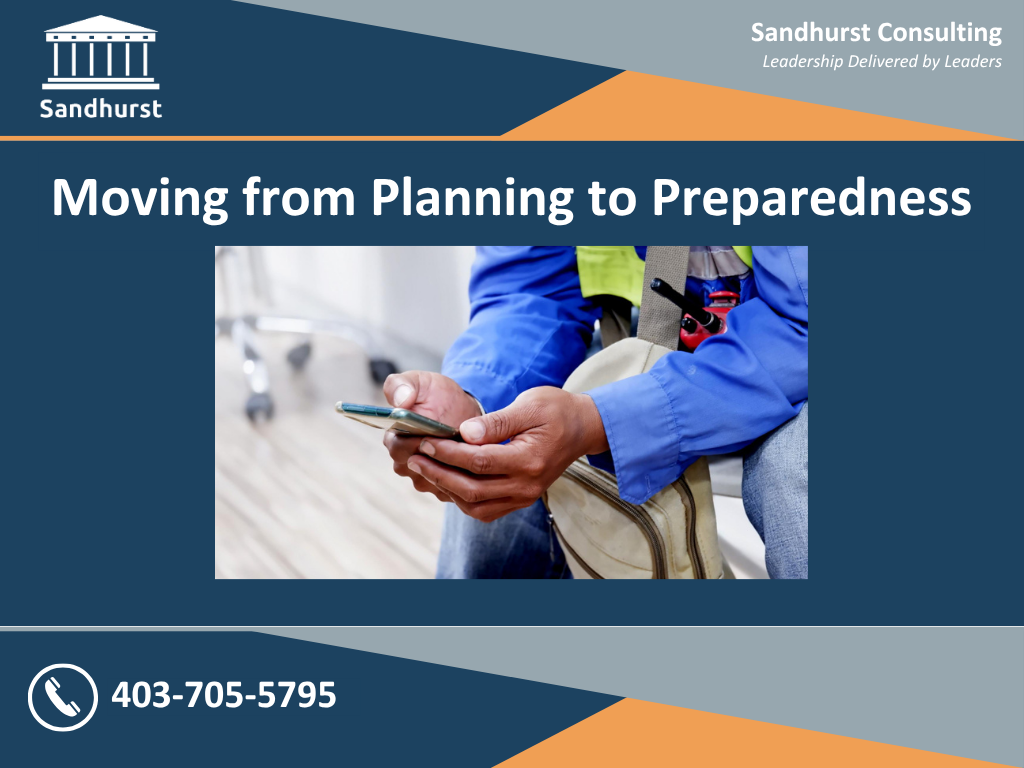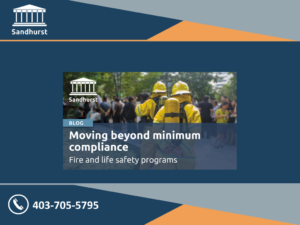Moving from Planning to Preparedness
The reality is that a crisis will eventually test every business. The question is not if, but when. Creating a comprehensive plan and training your people are essential first steps. To be ready, your team must not only know how to respond but also have tools that support rapid activation and seamless communication under the immense pressure of an emergency. The time to evaluate your communication tools and processes is now-don’t wait until hindsight becomes your only guide.
The first critical minutes of an unfolding crisis can be chaotic and evolve to a new disaster that could have been prevented. This is where the quality of communication and coordination during this critical initial window is the single greatest predictor of a successful outcome. A well-written emergency plan is an essential first step, but a plan sitting in a binder is useless without the ability to execute it instantly under pressure. Do you trust that your business can bridge the gap between the plan on paper and the real-world actions of your people?
The need to bridge the gap between planning and real-world execution has never been greater. Disruptions are no longer rare; they are becoming the norm. The World Economic Forum’s Global Risks Report 2025 highlights how businesses worldwide are increasingly exposed to compounding crises, from extreme weather and geopolitical tensions to supply chain disruptions and cyber threats. For organizations, the consequences are not just operational setbacks, but existential. According to FEMA, nearly 40% of small businesses never reopen their doors following a disaster. The stakes extend beyond financial losses, they include the safety of employees, the trust of customers, and the long-term reputation of your brand. In our analysis, organizations rarely fail for lack of a plan; they falter when their plan cannot withstand real-world pressure, often because it relies on outdated, and untested communication methods that break down in a crisis.

The Components of True Organizational Resilience
Building a resilient organization requires a holistic approach that goes far beyond having a standalone emergency response plan. Anyone can write a plan, but the real challenge is ensuring that the plan is integrated into an organization’s unique culture and processes. It’s about creating a culture of preparedness supported by interconnected systems and disciplines. Based on our work with hundreds of organizations, we believe a truly effective program must integrate several key functions and align them with the way the organization actually operates.
First, the foundation of resilience is a comprehensive program supported by clear policy and standards, which in turn strengthens the Emergency Response Plan. The plan serves as your playbook, outlining roles, responsibilities, and a process for managing any type of scenario. Who will serve as the Incident Commander? Who ensures the scene is safe for responders? Who communicates with external stakeholders? Without the structure of a program, even the best-written plan risks falling short, and in an emergency, hesitation caused by ambiguity can be catastrophic.
Next, you must look beyond the immediate response to Business Continuity. The goal is not just to survive the incident, but to continue serving your clients and meeting your obligations. That requires identifying your critical business functions and understanding what they depend on, your people, key suppliers, access to facilities and infrastructure, and the information systems that support operations. Business continuity planning develops strategies to protect these dependencies, ensuring your organization can keep operating under pressure. It’s the difference between weathering the storm or being sunk by it.
A plan is only as good as the people who execute it — which is why Leadership Development is essential. We have consistently observed that leaders trained in crisis decision-making perform exponentially better. They learn to remain calm, process incomplete information, and provide clear, decisive direction. Why does this matter? Because in the critical first moments of a crisis, hesitation or poor leadership can turn a manageable incident into a cascading disaster. Effective leadership ensures that your plan is not just written, but actionable when it matters most.
This leadership must be supported by Emergency Management Training and Emergency Response training such as practical, hands-on Fire and Life Safety Training for all employees, ensuring everyone knows how to react confidently and protect themselves and their colleagues. This also extends to Security and Contractor Management, as your organization’s risk profile does not end at your property line.

Executing Under Pressure > A modern tool for modern emergencies
While planning and training create the foundation, a new technology provides the nervous system that brings your plan to life. It needs to be built for the speed and complexity of the moment. Enter “Amulet Response” developed by responders for responders, it is designed with a singular focus: to make communication and coordination simple, rapid, and reliable when it matters most.
In our opinion, a response tool’s greatest asset is its simplicity. During an incident, adrenaline is high and cognitive function is reduced. A technology interface that is cluttered or complex to use in times of crisis, becomes a liability. Amulet’s simple, intuitive design allows your team members to quickly become skilled users with minimal training. This tool can be completely configured to match your organization’s unique structure, terminology, and response processes, so that it adapts to your business, not the other way around. This feature makes activating teams to utilize plans like a natural extension of your team’s daily work.
Effective timely communication is the lifeblood of a response. How do you ensure a critical alert is seen instantly by the right people? Amulet solves this by using multiple notification mechanisms, email, text, and push notifications. Controlled by the user the “noisy push” alert is a significant advantage, designed to break through a phone’s “do not disturb” or silent settings. This single feature can be the difference between a key responder missing an alert and getting on scene minutes faster. Once the team is activated, you can see who has responded and is available, providing an immediate picture of your response capability.
Situational awareness is another critical challenge that technology can solve. Making the right decisions depends on having the right information. Amulet allows you to see the location of your responders on a map, enabling you to dispatch the closest available person and maintain accountability for your team’s safety. Responders can use secure one-on-one or group chats to share real-time updates, photos, and documents from the field, giving leadership a clear, unfiltered view of the incident as it unfolds.
Finally, a response tool must be resilient. What happens if the emergency itself knocks out your power or internal IT network? Amulet is designed to run completely independent of your existing infrastructure, ensuring your lifeline for communication remains open even if all your other systems are down. After the event, the work continues. All communications are securely stored and can be easily archived. This provides an indisputable record for post-incident investigations, regulatory reporting, and legal inquiries, forming the basis for a culture of continuous improvement.
Need Help?
Our team at Sandhurst Consulting is committed to helping organizations build robust, practical, and effective emergency management programs. If you are curious to learn how Amulet stands out in comparison to other technologies – get in touch to find out how we can reduce the risk in your next emergency event.
You can fail to plan or plan to fail – which path are you going to take?
References:
- PwC Global Crisis and Resilience Survey 2023
- Official Website of the Department of Homeland Security
- WEF The Global Risks Report 2025 WEF_Global_Risks_Report_2025.pdf




